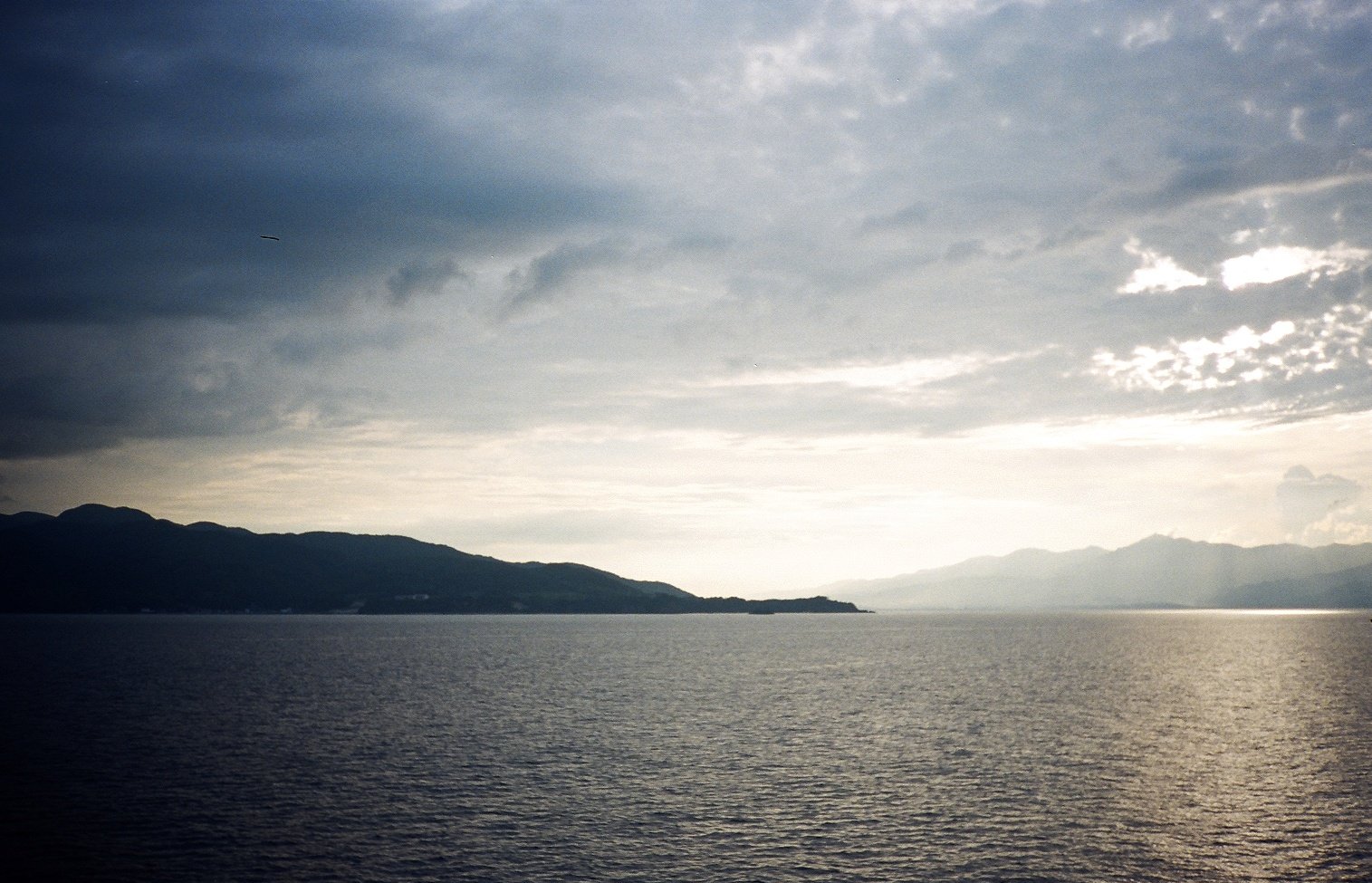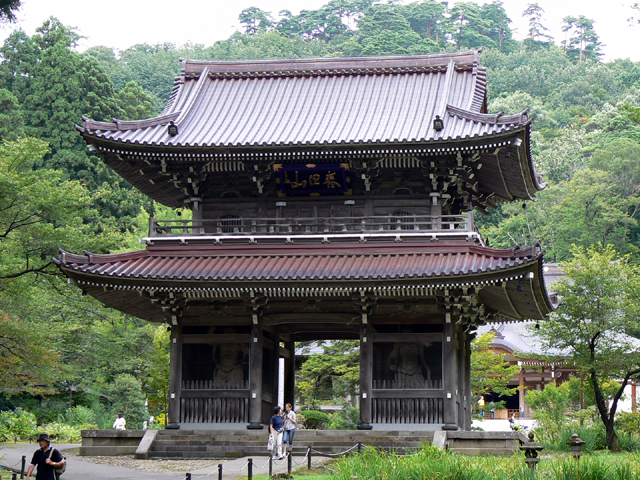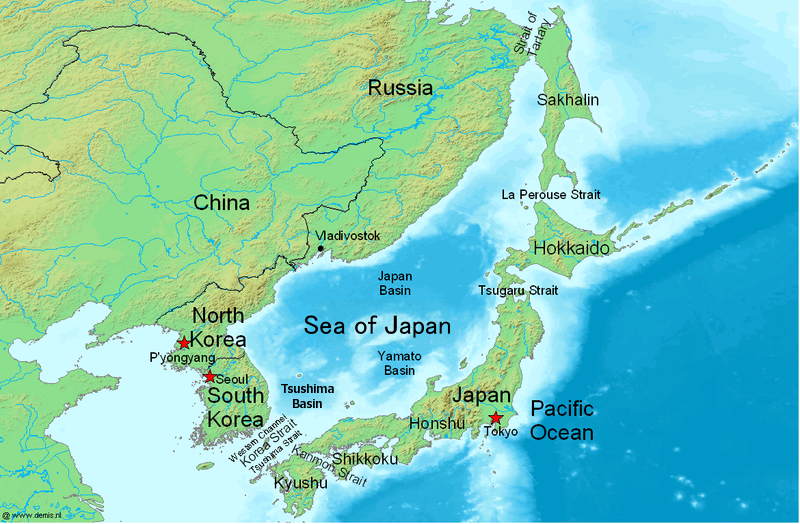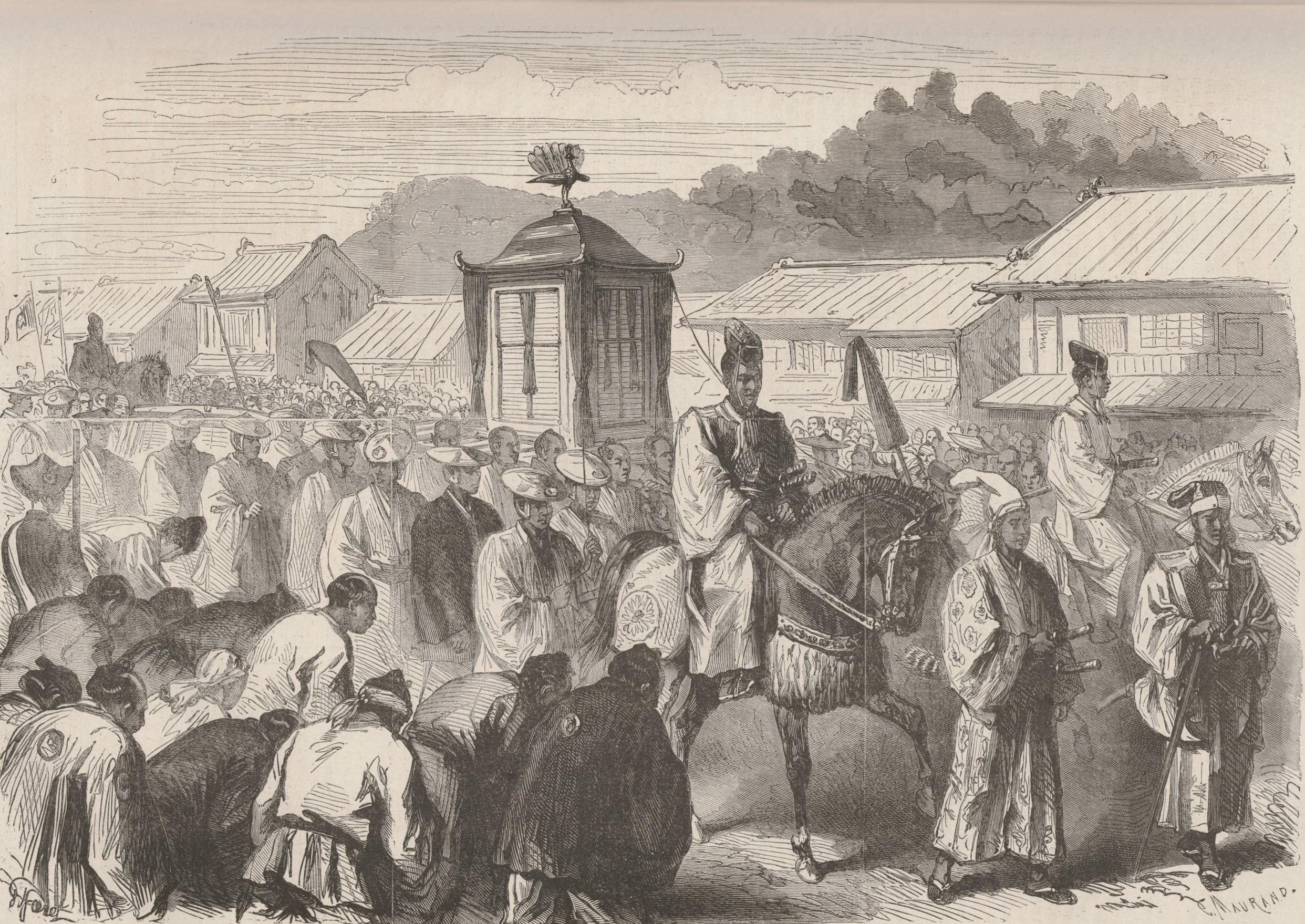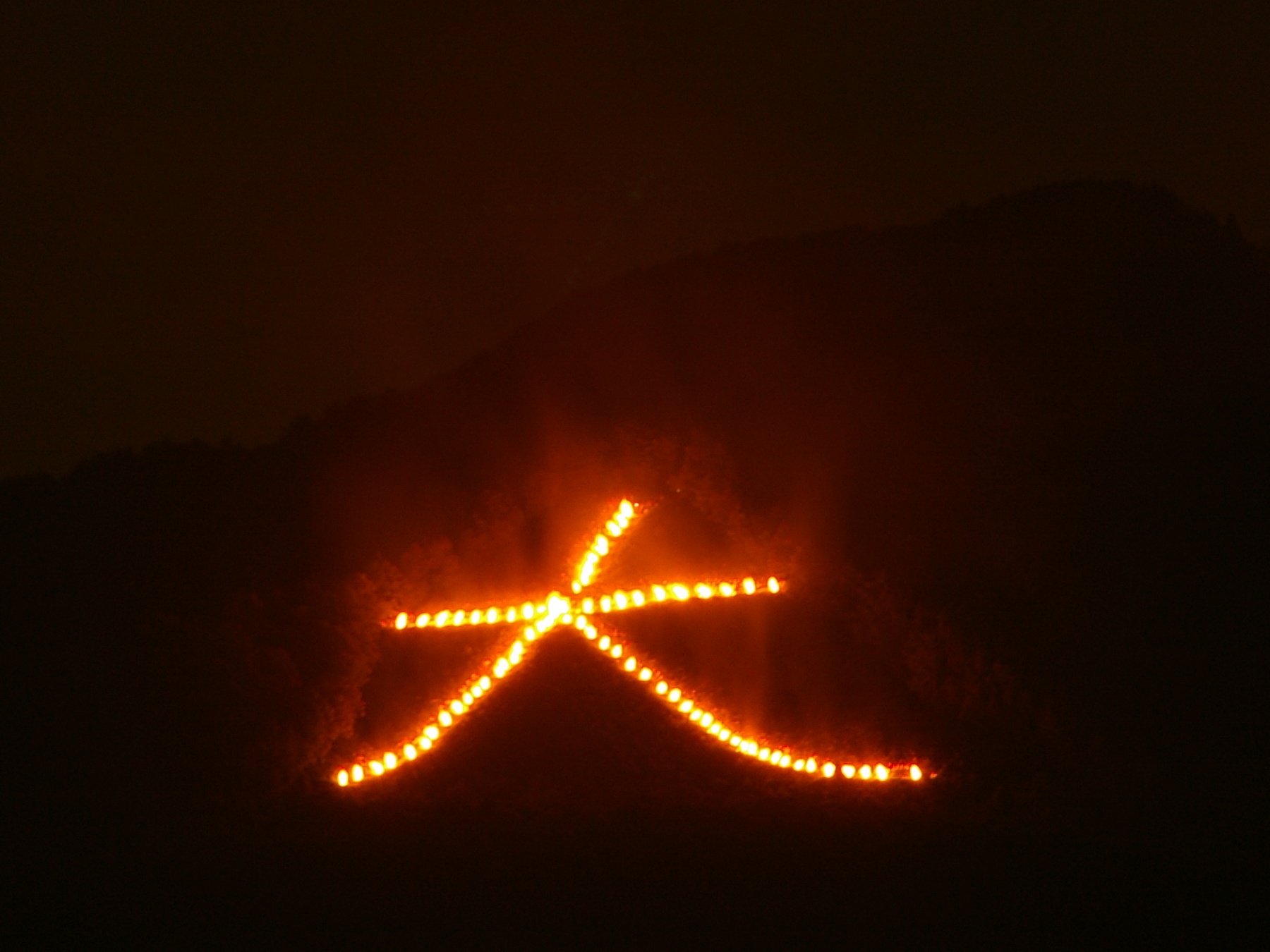|
Sado Okesa
Sado Okesa (in Japanese: 佐渡おけさ) is a Japanese folk song that originated in Sado Island, Niigata Prefecture. General "Okesa' or "Okesabushi" is a style of the Japanese folk songs that is said to have originated in Amakusa City, Kumamoto Prefecture. They typically describe the dialog between a man and a woman in love, and were sung there when the seamen drank sake together. These songs were brought to Sado Island by these seamen who worked on the Japan Sea route of sea transportation. Sado Okesa was sung in various versions in a few villages of Sado Island. During the latter half of the Meiji period, it already was a favorite song of those who worked in the famous gold mines of Aikawa, Niigata, Aikawa on Sado Island. This song became nationally famous in 1921 when it was broadcast in All Japan Folk Song Festival. It is now also a favorite Obon festival dance music for the people in Niigata Prefecture and its neighboring prefectures. Lyrics One of the various version ... [...More Info...] [...Related Items...] OR: [Wikipedia] [Google] [Baidu] |
Sado Island
is a city located on in Niigata Prefecture, Japan. Since 2004, the city has comprised the entire island, although not all of its total area is urbanized. Sado is the sixth largest island of Japan in area following the four main islands and Okinawa Island (excluding the Northern Territories). As of March 1, 2022, the city has an estimated population of 49,897 and a population density of 58.3 persons per square kilometre. The total area is 855.69 km2. History Political formation of the island The large number of pottery artifacts found near Ogi in the South of the island demonstrate that Sado was populated as early as the Jōmon period. The '' Nihon Shoki'' mentions that Mishihase people visited the island in 544 (although it is unknown whether Tungusic people effectively came). The island formed a distinct province, the Sado Province, separate from the Echigo province on Honshū, at the beginning of the 8th century. At first, the province was a single ''gun'' (distric ... [...More Info...] [...Related Items...] OR: [Wikipedia] [Google] [Baidu] |
Niigata Prefecture
is a prefecture in the Chūbu region of Honshu of Japan. Niigata Prefecture has a population of 2,227,496 (1 July 2019) and is the fifth-largest prefecture of Japan by geographic area at . Niigata Prefecture borders Toyama Prefecture and Nagano Prefecture to the southwest, Gunma Prefecture to the south, Fukushima Prefecture to the east, and Yamagata Prefecture to the northeast. Niigata is the capital and largest city of Niigata Prefecture, with other major cities including Nagaoka, Jōetsu, and Sanjō. Niigata Prefecture contains the Niigata Major Metropolitan Area centered on Niigata with a population of 1,395,612, the largest metropolitan area on the Sea of Japan coast and the twelfth-largest in Japan. Niigata Prefecture is part of the historic Hokuriku region and features Sado Island, the sixth largest island of Japan in area following the four main islands and Okinawa Island. History Until after the Meiji Restoration, the area that is now Niigata Prefectu ... [...More Info...] [...Related Items...] OR: [Wikipedia] [Google] [Baidu] |
Sado From The Sea
Sado can refer to: People *Prince Sado, a Joseon Korean crown prince who never acceded *Yutaka Sado, a Japanese conductor Other * ''Sado'' (film), a 2015 South Korean film * Sado, Niigata, a city (佐渡市 ''Sado-shi'') of Niigata Prefecture, Japan * , a parish in the municipality of Setúbal, Portugal * Sado Island, an island (佐渡島 ''Sadogashima'') of Japan * Sado province (佐渡国 ''Sado no kuni''), a former province of Japan located on the island * Japanese tea ceremony (茶道 ''Sadō'') * Sado (river), a major river in Portugal * Sado, a short story by Osamu Dazai * Yasutora Sado, a fictional character in the anime and manga series ''Bleach'' * Sado, Amarapura, Burma *Sado, Benin * Sadomasochism Sadomasochism ( ) is the giving and receiving of pleasure from acts involving the receipt or infliction of pain or humiliation. Practitioners of sadomasochism may seek sexual pleasure from their acts. While the terms sadist and masochist refer ... {{disambiguation, geo, ... [...More Info...] [...Related Items...] OR: [Wikipedia] [Google] [Baidu] |
Amakusa City
is a city located in Kumamoto Prefecture, Japan. As of March 31, 2017, Amakusa has an estimated population of 83,082 and a population density of 120 persons per km2. The total area is . Amakusa has the distinction of being the fastest depopulating city in Japan since the last census (2005). File:Ushibukahaiya.bridge.jpg, A night view of Ushibuka Haiya Bridge File:崎津教会堂 - panoramio.jpg, Sakitsu Catholic Church Amakusa covers the majority of two main islands, Kamishima (上島, "Upper Island") and Shimoshima (下島, "Lower Island") (天草諸島), and six smaller islands and islets. The modern city of Amakusa was established on March 27, 2006, from a merger between the former cities of Hondo and Ushibuka, and the towns of Amakusa , Ariake, Goshoura, Itsuwa, Kawaura, Kuratake, Shinwa and Sumoto from Amakusa District. Amakusa Airlines is headquartered in Amakusa. Geography Climate Amakusa has a humid subtropical climate (Köppen climate classification ' ... [...More Info...] [...Related Items...] OR: [Wikipedia] [Google] [Baidu] |
Kumamoto Prefecture
is a prefecture of Japan located on the island of Kyūshū. Kumamoto Prefecture has a population of 1,748,134 () and has a geographic area of . Kumamoto Prefecture borders Fukuoka Prefecture to the north, Ōita Prefecture to the northeast, Miyazaki Prefecture to the southeast, and Kagoshima Prefecture to the south. Kumamoto is the capital and largest city of Kumamoto Prefecture, with other major cities including Yatsushiro, Amakusa, and Tamana. Kumamoto Prefecture is located in the center of Kyūshū on the coast of the Ariake Sea, across from Nagasaki Prefecture, with the mainland separated from the East China Sea by the Amakusa Archipelago. Kumamoto Prefecture is home to Mount Aso, the largest active volcano in Japan and among the largest in the world, with its peak above sea level. History Historically, the area was called Higo Province; and the province was renamed Kumamoto during the Meiji Restoration. The creation of prefectures was part of the abolition of the feu ... [...More Info...] [...Related Items...] OR: [Wikipedia] [Google] [Baidu] |
Sake
Sake, also spelled saké ( ; also referred to as Japanese rice wine), is an alcoholic beverage of Japanese origin made by fermenting rice that has been polished to remove the bran. Despite the name ''Japanese rice wine'', sake, and indeed any East Asian rice wine (such as huangjiu and cheongju), is produced by a brewing process more akin to that of beer, where starch is converted into sugars which ferment into alcohol, whereas in wine, alcohol is produced by fermenting sugar that is naturally present in fruit, typically grapes. The brewing process for sake differs from the process for beer, where the conversion from starch to sugar and then from sugar to alcohol occurs in two distinct steps. Like other rice wines, when sake is brewed, these conversions occur simultaneously. The alcohol content differs between sake, wine, and beer; while most beer contains 3–9% ABV, wine generally contains 9–16% ABV, and undiluted sake contains 18–20% ABV (although this is o ... [...More Info...] [...Related Items...] OR: [Wikipedia] [Google] [Baidu] |
Japan Sea
The Sea of Japan is the marginal sea between the Japanese archipelago, Sakhalin, the Korean Peninsula, and the mainland of the Russian Far East. The Japanese archipelago separates the sea from the Pacific Ocean. Like the Mediterranean Sea, it has almost no tides due to its nearly complete enclosure from the Pacific Ocean. This isolation also affects faunal diversity and salinity, both of which are lower than in the open ocean. The sea has no large islands, bays or capes. Its water balance is mostly determined by the inflow and outflow through the straits connecting it to the neighboring seas and the Pacific Ocean. Few rivers discharge into the sea and their total contribution to the water exchange is within 1%. The seawater has an elevated concentration of dissolved oxygen that results in high biological productivity. Therefore, fishing is the dominant economic activity in the region. The intensity of shipments across the sea has been moderate owing to political issues, but it i ... [...More Info...] [...Related Items...] OR: [Wikipedia] [Google] [Baidu] |
Meiji Period
The is an era of Japanese history that extended from October 23, 1868 to July 30, 1912. The Meiji era was the first half of the Empire of Japan, when the Japanese people moved from being an isolated feudal society at risk of colonization by Western powers to the new paradigm of a modern, industrialized nation state and emergent great power, influenced by Western scientific, technological, philosophical, political, legal, and aesthetic ideas. As a result of such wholesale adoption of radically different ideas, the changes to Japan were profound, and affected its social structure, internal politics, economy, military, and foreign relations. The period corresponded to the reign of Emperor Meiji. It was preceded by the Keiō era and was succeeded by the Taishō era, upon the accession of Emperor Taishō. The rapid modernization during the Meiji era was not without its opponents, as the rapid changes to society caused many disaffected traditionalists from the former samu ... [...More Info...] [...Related Items...] OR: [Wikipedia] [Google] [Baidu] |
Aikawa, Niigata
was a town located in Sado Island, Niigata Prefecture, Japan. On March 1, 2004, Aikawa and the other 9 municipalities in the island were merged to create the city of Sado. Since then, Aikawa has been one of the 10 subdivisions of Sado City. History Transportation Bus * Niigata Kotsu Sado Local attractions * Aikawa Gold and Silver Mine (Sado mine) ** Kitazawa Flotation Plant ( :ja:北沢浮遊選鉱場) ** Aikawa Folk Museum * Sado bugyōsho * Senkakuwan Bay ( :ja:尖閣湾) Kitazawa Sadoisland (197983463).jpeg, Kitazawa Flotation Plant) Sado bugyousyo.JPG, Reconstruction of the Sado bugyōsho Sado gold mine002.JPG, Aikawa Folk Museum See also *Sado, Niigata *Sado mine The is a generic term for gold and silver mines which were once located the island of Sado in Niigata Prefecture, Japan. Among these mines, the was the largest and was in operation until the modern era. The Sado Gold and Silver Mine was inscri ... * Sado bugyō References External linksSado T ... [...More Info...] [...Related Items...] OR: [Wikipedia] [Google] [Baidu] |
Obon
or just is fusion of the ancient Japanese belief in ancestral spirits and a Japanese Buddhist custom to honor the spirits of one's ancestors. This Buddhist–Confucian custom has evolved into a family reunion holiday during which people return to ancestral family places and visit and clean their ancestors' graves when the spirits of ancestors are supposed to revisit the household altars. It has been celebrated in Japan for more than 500 years and traditionally includes a dance, known as . The festival of Obon lasts for three days; however, its starting date varies within different regions of Japan. When the lunar calendar was changed to the Gregorian calendar at the beginning of the Meiji era, the localities in Japan responded differently, which resulted in three different times of Obon. (Bon in July) is based on the solar calendar and is celebrated around the 15th of July in eastern Japan ( Kantō region such as Tokyo, Yokohama and the Tōhoku region), coinciding with . ( ... [...More Info...] [...Related Items...] OR: [Wikipedia] [Google] [Baidu] |
Li (unit)
''Li'' (, ''lǐ'', or , ''shìlǐ''), also known as the Chinese mile, is a traditional Chinese unit of distance. The li has varied considerably over time but was usually about one third of an English mile and now has a standardized length of a half- kilometer (). This is then divided into 1,500 chi or "Chinese feet". The character 里 combines the characters for "field" ( 田, ''tián'') and "earth" (土, ''tǔ''), since it was considered to be about the length of a single village. As late as the 1940s, a "li" did not represent a fixed measure but could be longer or shorter depending on the ''effort'' required to cover the distance. There is also another ''li'' (Traditional: 釐, Simplified: 厘, ''lí'') that indicates a unit of length of a ''chi'', but it is used much less commonly. This ''li'' is used in the People's Republic of China as the equivalent of the ''centi-'' prefix in metric units, thus ''limi'' ( 厘米, límǐ) for centimeter. The tonal difference makes i ... [...More Info...] [...Related Items...] OR: [Wikipedia] [Google] [Baidu] |
